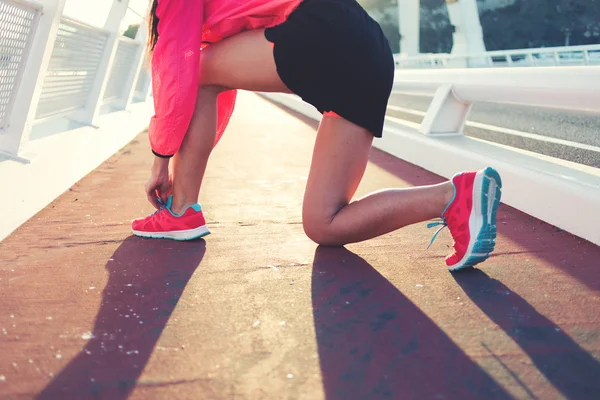Feeling Sore After Running? Running is a rewarding pursuit, but whether you’re training for your first 5K or logging miles for a marathon, soreness and tightness can sneak up on anyone. That familiar ache after a long run is often a sign that your muscles are adapting and growing stronger, but it can also signal the need for better recovery strategies. Stretching, when done correctly and consistently, is one of the most effective ways to ease post-run aches and improve flexibility, ultimately supporting your performance and reducing injury risk.
Why Stretching Matters for Runners

The Benefits of Post-Run Stretching
After pounding the pavement, your muscles are warm and more pliable, making it the perfect time for gentle stretching. This practice helps:
- Increase blood flow to tired muscles, speeding up recovery
- Improve range of motion, which can enhance running form and efficiency
- Reduce the buildup of lactic acid, lessening post-run stiffness
- Lower the risk of common running injuries, such as IT band syndrome and shin splints
Statistics highlight the impact: a review of studies found that 21.4% of performance variables and 13.3% of metabolic variables improved after a single bout of stretching, though results depend on the type and duration of stretches performed. Notably, less flexible runners may see even greater benefits, as an optimal amount of flexibility is linked to more economical running.
How to Stretch for Maximum Benefit
Active Engagement and Consistency
The effectiveness of stretching hinges on technique and regularity. Rather than holding a static position passively, it’s more beneficial to find your point of tension and actively engage the muscle in that position. This approach yields quicker, stronger, and more lasting results. For most runners, focusing on the major muscle groups used during running-hips, calves, hamstrings, quads, and glutes-delivers the best outcomes.
The 7 Best Stretches for Runners
Below are seven essential stretches, each targeting a key area affected by running. These moves are easy to incorporate into your post-run routine and can be adapted based on your flexibility and needs.
1. Half Kneeling Hip Flexor Stretch
Tight hip flexors are a common complaint among runners, especially those who sit for much of the day. This stretch helps release tension and restore balance.
- Kneel on one knee with the other foot flat in front, knee over ankle.
- Keep your torso tall and gently tilt your pelvis under.
- Reach your arms overhead and side bend away from the kneeling leg.
- Hold for 20–30 seconds, then switch sides.
2. Calf Stretch
Calves absorb significant impact with each stride. Stretching them can prevent Achilles issues and improve stride efficiency.
- Stand facing a wall, place the ball of one foot against it.
- Lean forward gently until a stretch is felt in your calf.
- Hold for 10–20 seconds, then repeat on the other side.
3. Piriformis and Glute Stretch
Tightness in the glutes and piriformis can contribute to lower back pain and sciatic discomfort.
- Lie on your back, knees bent, feet flat.
- Cross one ankle over the opposite knee.
- Gently pull the uncrossed leg toward your chest until a stretch is felt in the glutes.
- Hold for 20–30 seconds, switch sides.
4. Standing Quadriceps Stretch
The quadriceps power your stride and stabilize your knees. Keeping them supple reduces the risk of knee pain.
- Stand tall, grab one ankle behind you, and gently pull it toward your glutes.
- Keep knees together and hips level.
- Hold for 20–30 seconds, switch legs.
5. Hamstring Stretch
Hamstrings are prone to tightness, especially after speed work or hill training.
- Sit with one leg extended and the other bent, foot against the inner thigh.
- Lean forward from the hips over the extended leg, keeping your back straight.
- Hold for 20–30 seconds, then switch legs.
6. Butterfly Stretch
This stretch targets the inner thighs and groin, helping maintain hip mobility.
- Sit with the soles of your feet together, knees dropping out to the sides.
- Hold your feet and gently press your knees toward the floor.
- Hold for 20–30 seconds.
7. Standing IT Band Stretch
The iliotibial (IT) band often becomes tight in runners, leading to lateral knee pain.
- Stand with feet crossed, raise one arm overhead.
- Lean away from the back leg until a stretch is felt along the outer hip/thigh.
- Hold for 20–30 seconds, switch sides.
Tips for Safe and Effective Stretching
- Warm up before stretching if you haven’t just finished running.
- Never force a stretch or bounce; gentle, steady pressure is best.
- Breathe deeply and relax into each position.
- Stretch both sides equally to maintain balance.
Frequently Asked Questions
Q. How long should I hold each stretch?
A. For most static stretches, 20–30 seconds is sufficient. Repeat each stretch 2–3 times for best results.
Q. Should I stretch before or after running?
A. Dynamic stretching is recommended before running to prepare muscles for activity, while static stretching is best reserved for after your run, when muscles are warm.
Q. Can stretching improve my running performance?
A. While the direct impact on speed or endurance is modest, regular stretching can help prevent injuries and improve running economy, especially for those with limited flexibility.
Final Thoughts
Every runner’s body is unique, and so are their recovery needs. By integrating these seven stretches into your routine, you not only ease soreness but also promote long-term flexibility and resilience. As one seasoned marathoner once shared, “Stretching after a tough run is like hitting the reset button for my legs-it’s the difference between waking up stiff and starting the next day ready to run again.” Listen to your body, stretch mindfully, and enjoy the journey-one stride, and one stretch, at a time.
Also Read | Davina McCall’s Expert Wellness Tips: Simple Daily Habits for Lasting Health and Happiness










